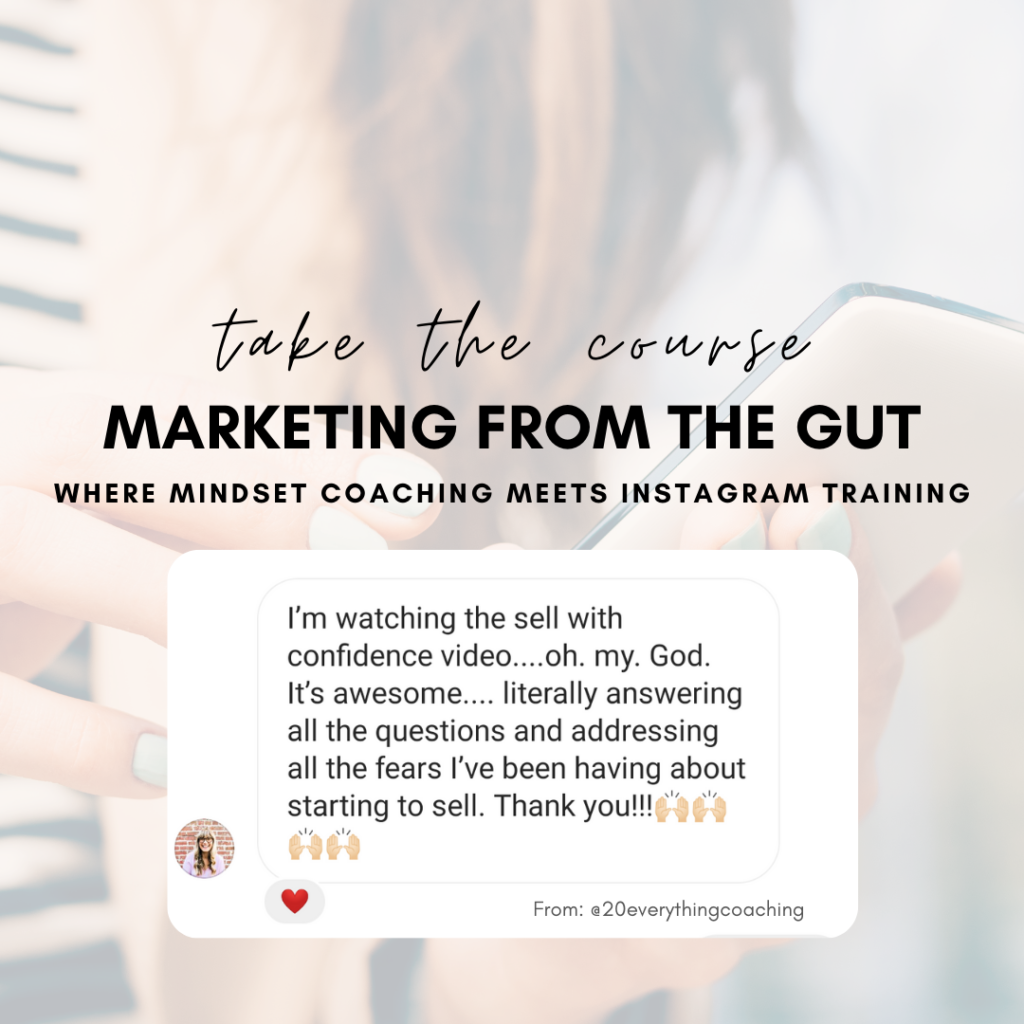A social media marketing audit may seem like something reserved only for big businesses—but businesses of all sizes can benefit. Consumers rank social media as the number one communication network to connect with brands, according to Sprout Social, but how do you know if you’re truly connecting with your audience if you don’t stop and check-in?
An audit allows you to take a step back and assess what you’re doing, whether it’s working, and what you need to change. With this information you can decide how your strategy needs to shift so you can be more effective.
In reality, a social media marketing audit should be on your social media calendar at least a few times per year—quarterly is ideal. But as business owners, entrepreneurs, and marketers, this important task can often get pushed to the bottom of the list.
Don’t let that happen any longer. Here’s what you need to know about doing your audit. Don’t miss our five easy steps to help you complete yours ASAP.
Don’t forget to download the social media goal-setting template to gain clarity, create structure and stress less.
Why Do A Social Media Marketing Audit?
A social media marketing audit holds you accountable to evaluating your strategy and making sure you’re not just checking a box but actually seeing business value. It’s also important to remember that social media is an evolving landscape with trends, algorithms, and behaviors that change daily. You need to take the time to make sure you’re staying relevant for consumers.
Here are a few direct results you can expect from consistent social media marketing audits:
- Better goal setting: How can you measure success if you don’t know what success looks like? An audit ensures that you have the right goals in place and you’re on track to reach them. If you don’t have established objectives, refer to our list of social media goals to set yours ASAP. You can also download our social media goal-setting template for more support.
- Marketing and business alignment: Social media marketing needs to align with your overall business objectives. An audit gives you a high-level view of your brand and performance. Compare this to your business goals to see if you’re driving real results. I.E. Are leads coming from social media? Are followers converting to customers?
- ROI clarity: An audit gives you an opportunity to answer the all-important question: Is this driving revenue? If not, you can change tactics and strategy so you don’t waste valuable time and money.
- New opportunities: Audits let you look at the entire social media landscape to brainstorm potential new areas where you can expand. For example, is your target audience increasingly on TikTok? If so, you can consider whether you need to shift gears and carve out a portion of your budget to experiment on the platform.
How to (Easily) Complete Your Social Media Marketing Audit
Before getting started, you need to have a central tool to collect and gather data from your audit. This makes it easier to analyze the information, share with co-workers or business partners, and refer back to it later. Plus 60 percent of the most successful marketers document their strategy.
This tool can just be a new tab on your existing social media spreadsheet or a Google doc. You don’t need to spend money to keep your audit information organized. If you don’t already have a content calendar, download JTC’s free Content Calendar Template to use for planning and tracking.
Now it’s time to get started. Follow these five steps to complete your social media marketing audit.
1. Dive into the Data
Buffer’s State of Social found that while 58 percent of marketers rate social media as very important to their overall marketing strategy, 20 percent are still uncertain how to measure effectiveness. This is exactly why you need data—it’s the backbone of digital marketing.
Review high-level analytics to get a birds’ eye view of your performance while also digging into data on individual posts. Most social media tools will allow you to zoom in and out in this way with pre-made dashboards. Below you can see some high-level analytics you can access through the social media scheduling tool Later.

Review data for each platform where you’re active and benchmark appropriate metrics. For example, if your goal is to increase brand awareness and grow your follower count, record your follower fluctuation month over month. Overtime these metrics start to create a pattern that you can use to inform your strategy and decisions.
Finally, look at a sampling of your recent posts on each network and their individual metrics. Use engagement to understand what resonates with your audience. Ask yourself questions as you do this, for instance:
- Which type of content gets the most likes—video or images?
- What captions provoke comments or shares?
- Which posts are people saving on Instagram?
- What content drives actions on my page (I.E, profile visits, website clicks, bio link clicks, etc.)?
Make a list on your spreadsheet of the most and least successful posts that you can reference while developing future content.
2. Check On Competitors
Competitor research is a powerful tool, especially when it comes to social media marketing. The beauty of most platforms is transparency. You can see engagement on your competitor’s posts to gauge what’s working for their audience, which also represents your target audience.
When auditing their accounts, look at a few key areas:
- What type of content do they post? Just like in step one, note the most successful types and topics on your spreadsheet.
- Check to see if they’re trying any different or new tactics. For example, are they running giveaways with high participation? Do they have live video streams or lots of story posts?
- How engaged are they? Do they respond to comments and keep conversation going with their community?
- Use this data to find new ideas to test out in your upcoming social media calendar and stay up-to-date with what’s happening in your industry.
If you want to dive even deeper, download our competitor analysis template and checklist.
3. Source Feedback via UGC
Search your brand name or tagged posts on social media platforms to see what your users are saying. You can search relevant and branded hashtags and also look for posts that tag your physical location, if you have one, or your account itself.
Social media is meant to be social, and your community is likely talking. Start listening and use their insights as valuable feedback to drive your future strategy. For example, if your followers ask the same questions consistently, create content to answer them. If people don’t like something about your product or service, fix that and post about why you did.
Companies pay thousands of dollars for market research to get feedback from their target consumer. With a bit of savvy searching, you can get it for free with your social media marketing audit.
4. Asses Social Media Trends
Your audit is the perfect time to check in on industry trends. Take this opportunity to refresh your knowledge on social media marketing, new features, algorithm updates, or anything that might be impacting your performance.
For example, the same Buffer report showed that 10 percent more businesses used video in their social strategy in 2019, while 87 percent had no plans to try IGTV for their brand. Those insights might lead you to believe that IGTV is an opportunity to stand out—if fewer people are using it, but followers are still consuming that content, this is a gap you can fill.
Here are a few industry-leading blogs to check during your social media audit to get the latest social media updates:
Keep Reading: Branding in the Age of Social Media: How to Get it Right
5. Refine Your Hashtag Strategy
Hashtags are a small but mighty tool for social media marketing, which is why you need to build them into your audit process and overall strategy.
Data from Later shows that the average number of hashtags on influencer’s posts quadrupled in the past four years. Posts with hashtags get more engagement, and 10+ hashtags equate to a 6 percent engagement rate.
But are you using hashtags correctly? In an ideal world, your target user searches a hashtag on a platform like Instagram to find content related to a topic. If you used the relevant hashtag correctly they’ll find your post, click on it, click around on your profile, like what they see, and hit the follow button.
One tool you can use to track whether your hashtags are working is Flick.Tech. With this tool, you can see which hashtags are reaching the most people. You can also search for new hashtags and check for banned hashtags so you don’t accidentally use one, which can result in banning or shadow-banning of your account.
It’s important to remember that Instagram wants you to use fresh hashtags on every post. Use your social media marketing audit to find the hashtags you’ll sprinkle into more posts while researching for new hashtags that make sense for your brand. Use our hashtag lists to find fresh hashtag ideas:
- 20 Travel Hashtags for Laptop Lifestyle Entrepreneurs
- 20 Soulpreneur Hashtags to Reach Clients Authentically on Instagram
- 20 Entrepreneur Hashtags to Reach Business Coaching Clients
- 15 Mental Health Hashtags to Reach Coaching Clients on Instagram
- 20 Motivational Hashtags for Inspiring Entrepreneurs on Instagram
- 20 International Women’s Day Hashtags to Empower Your Community
Build Social Media Marketing Audits Into Your Routine
Make time to audit your process, research best practices, and assess your performance if you want to have a long-term impact and get more from your social media marketing. Build regular social media marketing audits in your calendar to ensure ROI and continually level up your brand presence. In our modern world, you have to stay relevant if you want to be competitive.




